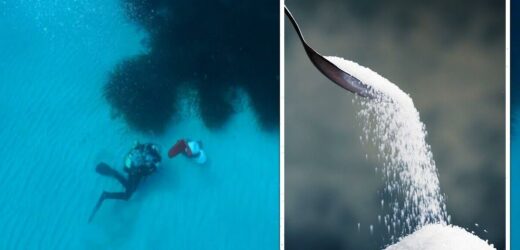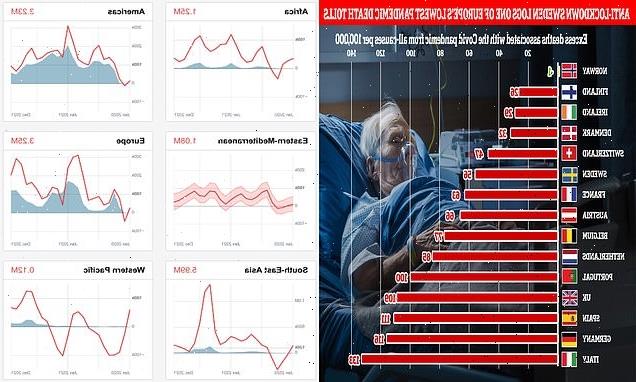Sirius Minerals fertiliser project explained
We use your sign-up to provide content in ways you’ve consented to and to improve our understanding of you. This may include adverts from us and 3rd parties based on our understanding. You can unsubscribe at any time. More info
Vladimir Putin’s invasion of Ukraine has dramatically reduced the production of crops and fertiliser in Europe, driving vulnerable areas in the Middle East and Africa to the brink of famine. Meanwhile, it has also had a knock-on effect in the West, as the price of staples soar – with supermarket prices expected to rise by as much as 20 percent. Brazil, the world’s largest producer of coffee, soybeans, and sugar imports more than 30 percent of its fertiliser from Russia.
But, hidden beneath the waves of the world’s oceans may be vast reserves of sugar that we never were aware of, according to new research.
Scientists have found that seagrass meadows on the ocean floor can store huge amounts of the sweet stuff underneath their waving fronds.
It comes in the form of sucrose, which is the main ingredient of sugar used in the kitchen and it’s released from the seagrasses into the soil underneath.
This area is known as the rhizosphere and it means the concentrations are up to 80 times higher than they would be normally.


Experts estimate that there could be up to 1.3 million tonnes of sucrose hiding in the world’s ocean beds.
They predict it would be enough to create 32 billion cans of Coca-Cola.
Marine microbiologist Nicole Dubilier said: “Under average light conditions, these plants use most of the sugars they produce for their own metabolism and growth.
“But under high light conditions, for example at midday or during the summer, the plants produce more sugar than they can use or store.
“Then they release the excess sucrose into their rhizosphere. Think of it as an overflow valve.”

And the excess sugar is not eaten by microorganisms in the water thanks to the seagrasses sending out phenolic compounds in the same way as many other plants do.
These chemical compounds inhibit the metabolism of most microorganisms and slow them down.
And the experts have put this to the test.
Marine microbiologist Maggie Sogin added: “In our experiments we added phenolics isolated from seagrass to the microorganisms in the seagrass rhizosphere.
“And indeed, much less sucrose was consumed compared to when no phenolics were present.”
DON’T MISS:
Shark mystery as super-rare ‘living fossil’ with 300 teeth found [REPORT]
How the UK, US and their allies could respond to a nuclear attack [INSIGHT]
India comes to Russia’s rescue AGAIN as coal imports soar [REVEAL]


Seagrasses already play a vital role in the planet’s ecosystem for carbon capture.
And now scientists hope they may also play a vital role in food supplies.
Ms Sogin added: “We do not know as much about seagrass as we do about land-based habitats.
“Our study contributes to our understanding of one of the most critical coastal habitats on our planet, and highlights how important it is to preserve these blue carbon ecosystems.”
The research has been published in Nature Ecology & Evolution.
Source: Read Full Article


